Lexington Softball, Fiber, and Bourbon
We had journeyed down through Indiana and Ohio to Kentucky in the pouring rain and, after locating the Campbell House Hotel in Lexington, we stayed put until the next day’s fiber festival. We were surprised to find players, coaches, trainers, and supporters in blue and orange draped over all the couches and chairs in lobbies, lounges, and hallways. Our local university team had travelled to Lexington for a softball tournament and, like us, had come in from the rain. My rain washed University windbreaker fit right in with the color scheme. The roads and parking lot were covered in deep puddles and, after a harrowing drive with cars and trucks creating great blinding clouds from the water slicked pavement, we went into hang out mode too.
The hotel was comfortable, but older and not as soundproof as one would have liked with hordes of college students joining us. The athletes and their entourage were all quite nice and we enjoyed chatting with them, promising to go cheer them on if we were still in town when they played their next game. The guest rooms were painted a very dark charcoal, almost black, so although it was comfortable physically it did not seem all that inviting a room for kicking back and relaxing. It did pass my chair test though, specifically having a comfortable chair in the room to claim as my own (in addition to the desk chair that is always claimed by the spouse). Good thing too, with every other seating surface in the hotel claimed by the team, it was the only seat available.
We did not have the fortitude to seek out local dining establishments. Fortunately, our dinner at the restaurant was quite nice and the staff were very engaging. Nibbling on bourbon glazed salmon and surrounded by displays of bourbon bottles, we got into discussions with the staff about what makes bourbon bourbon. The servers did not know, but one volunteered to run to the bar and find out from the bartender. She returned, saying that the bartender had taken a course on bourbon and had rattled off more than a messenger could possibly remember. After being asked for a two sentence answer, the bartender had summed it up with: it has to be more than 51% corn based, aged in oak barrels, and made in America. More research was needed and between Google and Wikipedia we got some answers. The next morning we had the same servers for breakfast and updated them on our bourbon research.
As it was the day before, all lobbies, lounges, hallways, and even the restaurant were filled with athletes, coaches and supporters. Wishing the players good luck in their game on our way out, we set out for the Kentucky Sheep and Fiber Festival and Bluegrass Classic Stock Dog Trials.
See Beasts of Fiber for a description of the fiber festival and dog trials.
Plans to tour more of Lexington were put aside, we decided to journey on towards Louisville after our time at the fiber festival and dog trials. Things we could have done in Lexington–time, weather, and energy permitting–included a visit to Mary Todd Lincoln’s childhood home and Ashland, Henry Clay’s plantation. But our stay there was brief and my impressions of the city are incomplete. I will say that, with its proximity to Cincinnati, the traffic congestion seemed out of proportion to a small city. I did not enjoy driving into and around the town and was happy to hit some peaceful country roads after the festival before returning to the Interstate for our journey to Louisville. In fairness, it is never easy to drive over wet roads in a pouring rain while listening for Doris, my Google Maps voice, to guide me through unfamiliar roads.
The Bourbon Trail
When pulling off the Interstate for lunch we happened to see tourist signs for distilleries and, as we were not in a hurry, it seemed like the Kentucky thing to do. When in Rome or, in our case, when on the Bourbon Trail…
Searching Google Maps after lunch we found a distillery that looked interesting and was not too far from the restaurant. It was interesting too, but it was not operational. Or if operational, it was not in any shape to receive visitors in spite of the sign stating it was reopening in spring of 2016. The road to the Castle & Key Distillery was a lovely windy forested road dropping down to a riverbed in Millville, a peaceful diversion from the fast paced Interstate and well worth the drive in spite of the facility not being open to the public. The complex was surprisingly large, beautiful, and impressive, although some of the 19th century buildings appeared to be crumbling with missing windows and vines were invading the masonry. It was a rewarding side-trip but it did not provide us with the requisite Kentucky distillery experience. Google Maps to the rescue, there was another distillery further up the road. We followed the windy and forested creekside road to our next destination, the appropriately named town of Versailles. How perfectly fitting to have bourbon in Versailles.
Woodford Reserve Distillery was the complete opposite of the Castle & Key, after being the only souls in sight at the first distillery we were eclipsed by the the crowd at the next. Parking lots overflowed their borders and stretched out into muddy fields. When we pulled into the complex, multiple flag men directed us away from the main parking lots downhill to a churned up, sloped, and mud-sloppy area to park; fortunately my faithful steed Hubie had all wheel drive to resist the tire grabbing muck. We parked, gingerly made our way up the slick slope, and were trying to find our bearings when one of the flag men hailed us, directing us to the visitor center and warning us to watch out for all the buses and their crazed drivers. And buses there were, several tour buses making the Bourbon Trail circuit joined by the distillery’s own tour buses. Streams of people were loading onto and off of these buses, following the directions of their barking tour guides. It was reminiscent of the border collies herding sheep at the dog trials we had seen earlier in the day. Do they hold tour guide trials? These guides would have done well in competition, their tourists moved with purpose and alacrity.
We made our way through the crowds in the visitor center to the gift shop and asked the cashier where we might be able to taste the bourbon. We were directed to one of those cordoned, switchback-queues designed to hold long lines of people in a compact space and queued our way up to one of the several clerks behind a long counter. Although it was mid-afternoon, tours for the day, we were told, were sold out but tasting was available for $8 per person. Fine, I was not that interested in tasting–I have tried various spirits in the past and am not a fan of whiskey–but $8 for the spouse to taste was an acceptable price to pay for the experience. Or it would have been acceptable had they not insisted that I pay $8 too, regardless of the fact that I was not tasting. We declined. As we turned to leave, the clerk offered us a bourbon chocolate so our time in line was not entirely wasted. In a last ditch effort to have a bourbon experience, we returned to the gift shop to see if they had any smallish sized bottles for an equivalent $16 to pick up and taste on our own. The gift shop had only big and bigger bottles. Empty handed we once again pushed our way through the crowds to find our way back to the mud-slicked hillside parking. We serpentined our way out of the visitor center only to be delayed by another throng being herded efficiently onto a distillery-owned bus for the next tour.
As lovely as the setting was, it seemed set up to cram as many people as possible through the distillery experience while separating the tourist dollar from the tourist. I said to the spouse, “This is a boozeneyland.” It reminded me of the most touristy wineries in Napa Valley; those more interested in being a top tourist attraction than in sharing a love of their world class winemaking.
Our friendly flagman suggested that we take care walking down the hill to our car and that we make our way to the exit by finding a path going down rather than up. Good advice, the once grass covered slope was a slick muddy mess from the many tires passing over the rain soaked hillside. I backed out cautiously, mindful of not getting stuck in the mud or slipping into the SUV emblazoned with NRA stickers that was parked in front of me. As I guided Hubie through the most firm looking ground I could find to the exit road, we wondered if the Bourbon Trail had adopted the worst of the Napa Valley-type tourism. Leaving Boozeneyland and Bourbon Trail behind, we wound our way back country roads to the Interstate having not tasted a drop.
Continuing on our way to Louisville we saw a tourist sign for a distillery and historical site in Frankfort. We dithered for a moment and, given that we were not on a schedule and had no place we had to be, we brought up Buffalo Trace Distillery on Google Maps and followed voice instructions from Doris over the river and through the woods. We dropped down a small drive to a huge brick complex alongside the river and found our way to a paved parking lot with plenty of spaces available. The rich, almost smokey smell of fermenting spirits hung in the air as we began our walk around the buildings. A little table beneath an umbrella displayed a “check-in here” sign and we held onto our wallets and prepared for the worst. Two very friendly ladies invited us to join an hour-long tour that was just starting. Mentally seeing dollar signs, we declined and asked if it was possible to just taste. She responded that it was and asked how many tickets we needed; our response was not “two please” but “how much?” Surprisingly, there was no charge. The tickets had a later time, giving us about twenty minutes to wander about, but the price was right.
The tasting area was on the second floor of the visitor’s center and had three large bars. One tour group was just finishing and another arriving at the main bar and we prepared for another crush of bourbon breathed humanity. We showed our tickets and were directed to the third bar where a smaller but ever so lively group was tasting. When it was our turn, we were surprised to find we were the only two scheduled at that time and, best of all, were hosted by a very friendly and knowledgable bartender. He confirmed our newly acquired Wikipedia knowledge and added a lot to it.
Although the wafting smell of whisky throughout the grounds was heavenly, I do not have a taste for whisky nor do I have a desire to acquire one, but this was Kentucky and we were in an award winning distillery. Our first taste was of the basic Buffalo Trace bourbon, aged 8 years. We were instructed to taste the bourbon in 3 sips: the first sip would taste strongly of alcohol, the second also of alcohol but with a bit of flavor coming through, the third sip would be the tasting sip. He was right, the first sip knocked me over with a boozy blast. Either I had killed my tongue by the third sip, or there was truth to what he said, and it did seem more flavorful. Then he had us taste a sipping bourbon, aged 10 or more years, and it was much smoother to my exploded taste buds. We concluded with a bourbon cream, basically heavy cream and bourbon, to which he added a bit of old style root beer for a boozy adults only root beer float. Our parting taste was a bourbon chocolate; now that I liked at first bite and definitely did not need three nips to get there.
This time our trip to the gift shop was not restricted to tiny bottles and we left with full bottles of the basic bourbon, the sipping bourbon, and a box of bourbon chocolates. No doubt the spouse is envisioning sipping fine bourbon by the fireside,  but after eating those chocolates and having the nice bourbon glazed salmon the night before, I am envisioning culinary explorations. I may have to wait a year or so before I can dip in without the spouse protesting the use of fine bourbon for the pot, but the staff assured me that bourbon lasts indefinitely. Eventually his interest will wane or his back will be turned; sooner or later the bottles will gather dust in the bar and be ready for a trip to the kitchen.
but after eating those chocolates and having the nice bourbon glazed salmon the night before, I am envisioning culinary explorations. I may have to wait a year or so before I can dip in without the spouse protesting the use of fine bourbon for the pot, but the staff assured me that bourbon lasts indefinitely. Eventually his interest will wane or his back will be turned; sooner or later the bottles will gather dust in the bar and be ready for a trip to the kitchen.
I may never develop a taste for bourbon in my glass, but I could certainly learn to love it on my plate.
Next up: A Kentucky Sampler: B&B Guns, Louisville, and Five is the New Ten

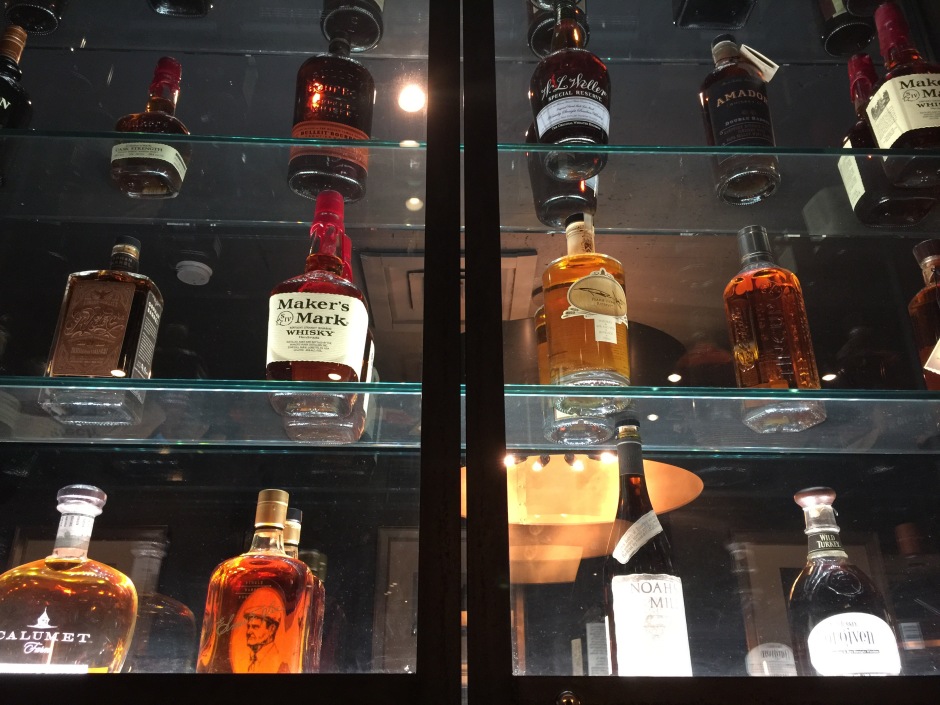














 market basket.
market basket.





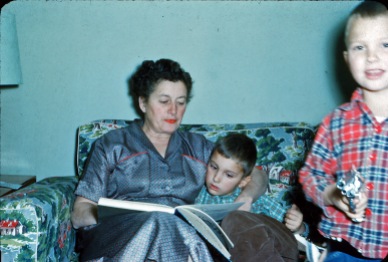

 would have chosen to be at that moment. Bless her heart, looking back at it now I think she meant it as a special and rare one-on-one time. Truth be told, we did get on quite well that night and had a proper chat. I was too tired to show my disappointment in missing out on a college party and–given that her goat had been captured and penned quite enough for one day–there were no “well” moments that evening. And in retrospect it was a pleasant night I can look back upon fondly.
would have chosen to be at that moment. Bless her heart, looking back at it now I think she meant it as a special and rare one-on-one time. Truth be told, we did get on quite well that night and had a proper chat. I was too tired to show my disappointment in missing out on a college party and–given that her goat had been captured and penned quite enough for one day–there were no “well” moments that evening. And in retrospect it was a pleasant night I can look back upon fondly.







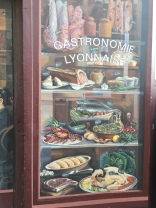




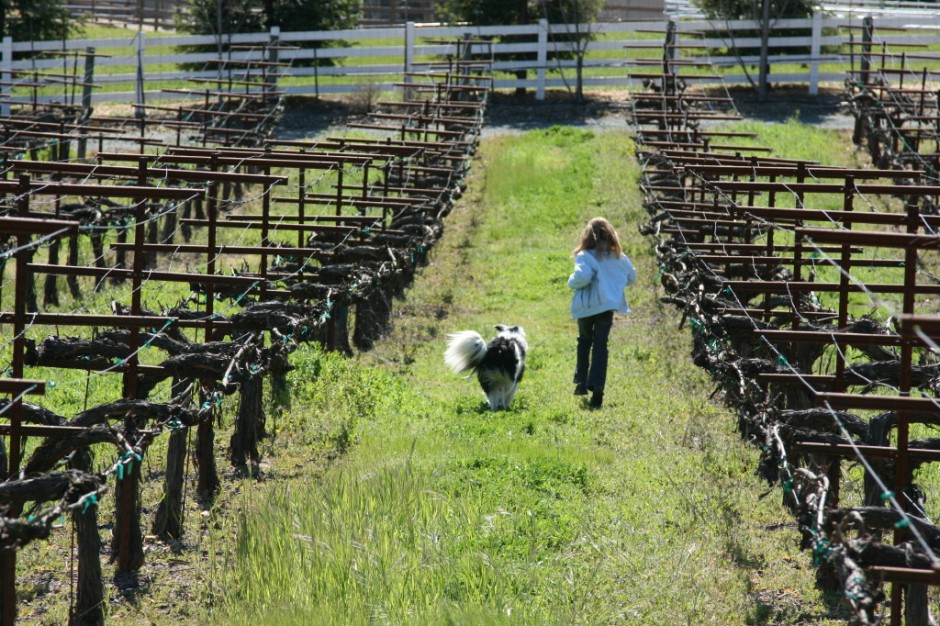
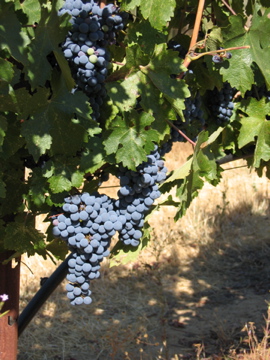 One of our favorite Bay Area events was the Santa Cruz Mountains Wine Weekends, the purchase of one wine glass was the ticket to wineries on the Bay side of the Santa Cruz Mountains the first weekend and the ocean side the second. The bay side was convenient to us and we had relatives to stay with on the ocean side, so the purchase of one glass was a ticket to a lot of wines.
One of our favorite Bay Area events was the Santa Cruz Mountains Wine Weekends, the purchase of one wine glass was the ticket to wineries on the Bay side of the Santa Cruz Mountains the first weekend and the ocean side the second. The bay side was convenient to us and we had relatives to stay with on the ocean side, so the purchase of one glass was a ticket to a lot of wines.



 this recipe. A braise is usually satisfyingly rich and, more importantly, very forgiving. In an unorthodox move, I made a mass of polenta in a fuzzy logic rice cooker, but I needed a way to keep it hot and moist for an undertimined amount of time and fortunately it worked like a charm. We scurried about, sweated cucumber slices, spread them with goat cheese, and topped them with smoked salmon and a sprig of dill, moved furniture into place and laid the table, made last minute salads, and moments before guests arrived sliced up baguettes. We, three generations of women, worked all afternoon without a snip or a snarl.
this recipe. A braise is usually satisfyingly rich and, more importantly, very forgiving. In an unorthodox move, I made a mass of polenta in a fuzzy logic rice cooker, but I needed a way to keep it hot and moist for an undertimined amount of time and fortunately it worked like a charm. We scurried about, sweated cucumber slices, spread them with goat cheese, and topped them with smoked salmon and a sprig of dill, moved furniture into place and laid the table, made last minute salads, and moments before guests arrived sliced up baguettes. We, three generations of women, worked all afternoon without a snip or a snarl.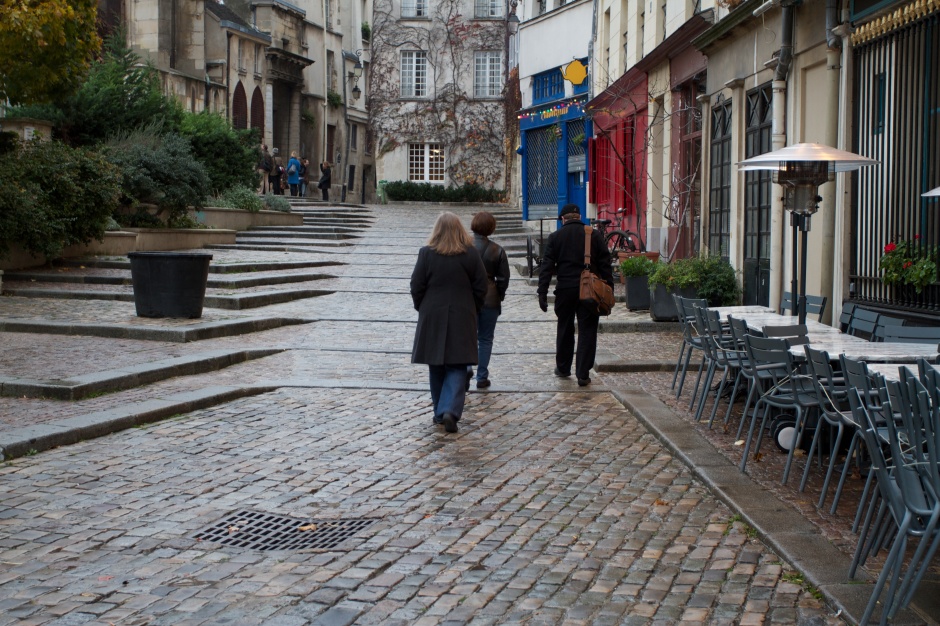





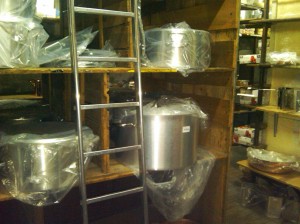















 meat, no dessert, wine in his glass, and water in mine. On the plus side, he can look at the wine cellar and say, “Mine, all mine!” He also has a sweet deal when it comes to a night out, a resident designated driver and lower restaurant tabs with only one person on the a bar bill.
meat, no dessert, wine in his glass, and water in mine. On the plus side, he can look at the wine cellar and say, “Mine, all mine!” He also has a sweet deal when it comes to a night out, a resident designated driver and lower restaurant tabs with only one person on the a bar bill.